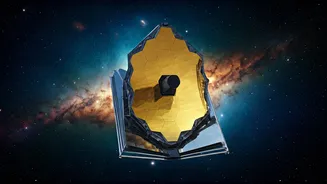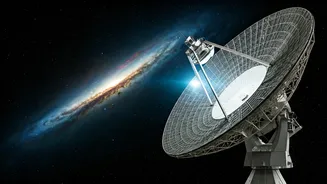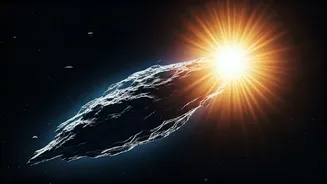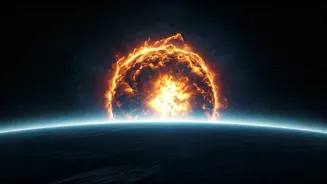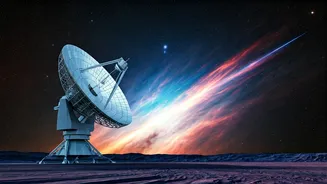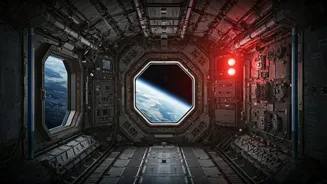Early Universe Explored
The James Webb Space Telescope (JWST) has made a groundbreaking discovery: it may have spotted the first generation of stars in the universe. These initial
stars played a crucial role in the universe's early evolution, as their formation marked the beginning of a chain reaction that produced heavier elements. These elements were essential for creating the stars, galaxies, and planets seen today. Observing these first stars will help scientists understand how the universe evolved. Analyzing the light from these ancient stars can reveal details about their composition, temperature, and environment, enabling scientists to reconstruct the conditions that existed shortly after the Big Bang. This will allow them to study the formation and evolution of the first galaxies and also determine how the first stars influenced the formation of the large-scale structures we observe in the present universe, such as galaxy clusters and filaments.
Telescope's Revolutionary Capabilities
The JWST's unique capabilities make this discovery possible. The telescope's infrared vision can see light from the early universe. This is because the expansion of the universe stretches the wavelengths of light, shifting the light from the first stars into the infrared spectrum. The JWST is uniquely positioned to detect these redshifted infrared signals. Its huge primary mirror, along with its sensitive detectors, allows it to collect faint light from distant objects, something the Hubble Space Telescope could not do. The telescope's advanced spectroscopic instruments can analyze the light to understand the stars' chemical composition and other characteristics. Through this, scientists can explore the atmospheres of exoplanets and observe the earliest phases of galaxy formation. The JWST also helps detect cosmic dust and gas clouds that are critical in forming stars and galaxies, which is crucial for studying the lifecycle of stars and the creation of elements within them.
Implications and Future Research
The possible discovery of the first stars has profound implications for our understanding of the universe. This finding is just a starting point. Further analysis could offer insights into the formation of the first galaxies, the production of the first heavy elements, and the evolution of the early universe. Discovering the first stars could help determine whether these stars had a similar composition to the present ones. This information will support the theories about the formation of the first stars. This discovery highlights the significance of the JWST in its investigation of the universe. Its potential will provide more evidence for scientists to comprehend the universe's evolution. Scientists will look for additional evidence to confirm these observations and to gain a more complete understanding. They will continue to analyze data, build models, and look at the universe with powerful telescopes.
